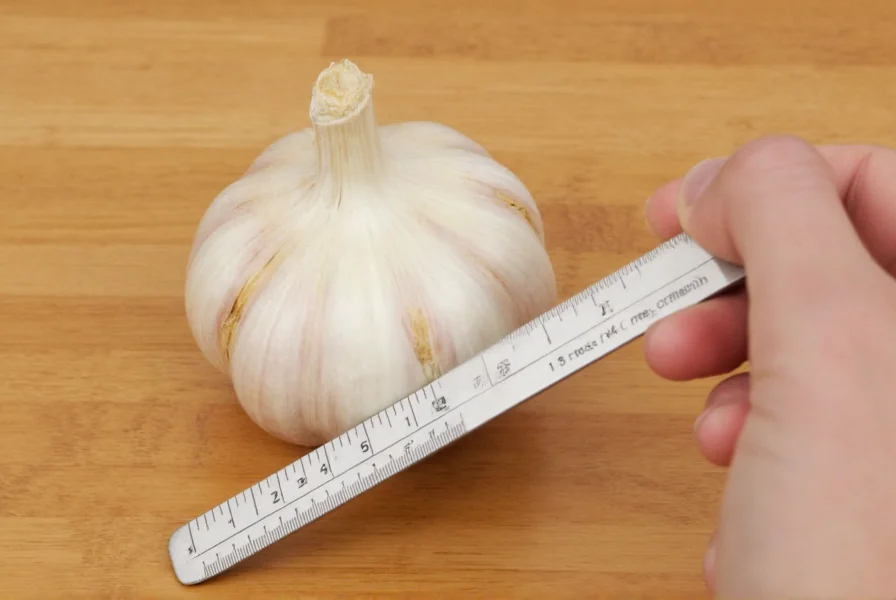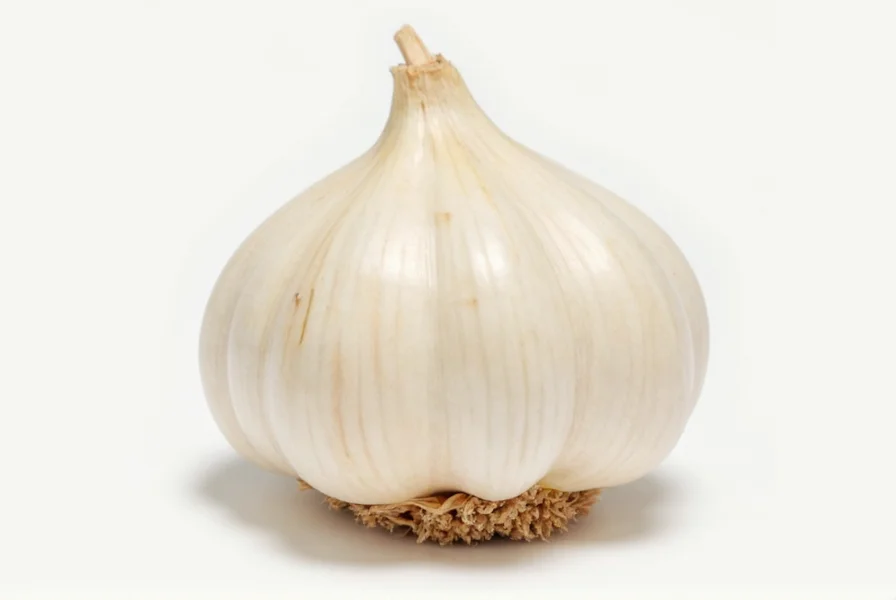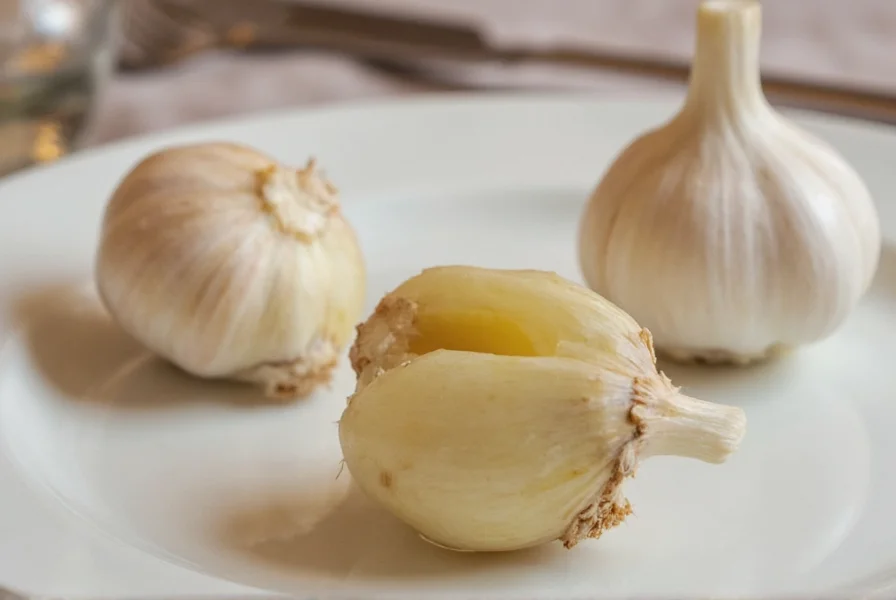Understanding precise garlic measurements is essential for achieving perfect flavor balance in recipes. Whether you're following a traditional recipe that calls for "one clove" or adapting measurements for different garlic forms, knowing the exact equivalents ensures consistent culinary results.
Standard Measurements for One Garlic Clove
The weight and volume of garlic can vary based on clove size, variety, and freshness. However, culinary professionals and food scientists have established standard measurements that work reliably in most cooking applications.
| Garlic Form | Equivalent to One Medium Clove | Weight |
|---|---|---|
| Whole unpeeled clove | 1 clove | 3-7g (0.1-0.25 oz) |
| Peeled fresh clove | 1 clove | 2-5g (0.07-0.18 oz) |
| Minced garlic | 1/2 teaspoon | 2.5g (0.09 oz) |
| Garlic powder | 1/8 teaspoon | 0.6g (0.02 oz) |
| Garlic flakes | 1/4 teaspoon | 1.2g (0.04 oz) |
| Garlic salt | 1/4 teaspoon | 1.2g (0.04 oz) |
Understanding Garlic Size Variations
Garlic cloves come in different sizes, which affects their measurement equivalents. When recipes specify "one clove" without size qualification, they typically mean a medium-sized clove (about 1 inch long and 3/4 inch in diameter).

Small Clove (approximately 3/4 inch long)
- Weight: 1.5-3g (0.05-0.1 oz) peeled
- Minced equivalent: 1/4 teaspoon
- Garlic powder equivalent: 1/16 teaspoon
Medium Clove (standard recipe measurement)
- Weight: 2-5g (0.07-0.18 oz) peeled
- Minced equivalent: 1/2 teaspoon
- Garlic powder equivalent: 1/8 teaspoon
Large Clove (approximately 1.25 inches long)
- Weight: 5-9g (0.18-0.32 oz) peeled
- Minced equivalent: 1 teaspoon
- Garlic powder equivalent: 1/4 teaspoon
Converting Between Fresh Garlic and Processed Forms
When substituting different garlic forms in recipes, understanding the concentration differences is crucial. Fresh garlic contains moisture that processed forms lack, affecting both volume and flavor intensity.
Fresh Garlic to Minced Garlic Conversion
One medium fresh garlic clove yields approximately 1/2 teaspoon of minced garlic. This conversion works well for most recipes, though freshly minced garlic has a brighter, more complex flavor than pre-minced jarred garlic.
Fresh Garlic to Garlic Powder Conversion
The standard conversion is 1:3 - one fresh garlic clove equals 1/8 teaspoon of garlic powder. This ratio accounts for the dehydration process that concentrates the flavor while removing moisture. When substituting, remember that garlic powder has a more mellow, earthy flavor profile compared to fresh garlic's sharp pungency.
Garlic Powder to Garlic Salt Conversion
Garlic salt is typically a 3:1 ratio of salt to garlic powder. Therefore, 1/4 teaspoon garlic salt equals approximately 1/8 teaspoon garlic powder plus 1/8 teaspoon salt. When substituting garlic salt for fresh garlic, reduce additional salt in your recipe accordingly.
Practical Measurement Tips for Home Cooks
Accurate garlic measurement significantly impacts recipe outcomes. Here are professional techniques for precise garlic measurement:
- For fresh cloves: When recipes call for multiple cloves, weigh them together rather than estimating individual cloves
- For minced garlic: Pack the minced garlic into your measuring spoon and level it off for accuracy
- For garlic powder: Spoon powder into measuring spoon and level with straight edge - don't pack
- When substituting: Adjust for flavor intensity - fresh garlic is stronger than powder in most applications

Factors Affecting Garlic Measurements
Several variables influence the precise measurement of garlic:
Garlic Variety
Softneck garlic (most common in supermarkets) typically has smaller cloves than hardneck varieties. Elephant garlic, despite its name, is actually a leek relative and has much larger cloves with milder flavor.
Seasonality
Freshly harvested garlic (spring/summer) contains more moisture than cured garlic (fall/winter), affecting weight measurements. Cured garlic stores better but has slightly more concentrated flavor.
Preparation Method
How you prepare garlic affects volume: finely minced garlic packs more densely than roughly chopped. For precise measurements, especially in baking or delicate sauces, weighing is always more accurate than volume measurements.
Common Measurement Mistakes to Avoid
Many home cooks make these garlic measurement errors that affect recipe results:
- Assuming all cloves are the same size (they vary significantly)
- Using jarred minced garlic as a 1:1 substitute for fresh (it's less potent)
- Not adjusting salt when using garlic salt as a substitute
- Packing garlic powder too tightly into measuring spoons
- Ignoring the moisture content difference between fresh and dried forms
Professional Chef Recommendations
Top chefs emphasize that while precise measurements are important, understanding garlic's flavor profile is equally crucial. As Chef Marco Pierre White notes, "Garlic should whisper, not shout" in most dishes. The exact measurement matters less than achieving the right flavor balance for your specific recipe and personal taste preferences.
For delicate dishes like fish or light sauces, use the lower end of measurement ranges. For robust dishes like stews or roasted meats, you can safely use the higher end. Always remember that garlic flavor intensifies as it cooks, so add it later in the cooking process for milder flavor.











 浙公网安备
33010002000092号
浙公网安备
33010002000092号 浙B2-20120091-4
浙B2-20120091-4